Searching, please wait...

|
What is JacketFlap
-
JacketFlap connects you to the work of more than 200,000 authors, illustrators, publishers and other creators of books for Children and Young Adults. The site is updated daily with information about every book, author, illustrator, and publisher in the children's / young adult book industry. Members include published authors and illustrators, librarians, agents, editors, publicists, booksellers, publishers and fans.
Join now (it's free).
Sort Blog Posts
Sort Posts by:
Suggest a Blog
Enter a Blog's Feed URL below and click Submit:
Most Commented Posts
In the past 7 days
Recent Posts
(from Tower Blog)
- Login or Register for free to create your own customized page of blog posts from your favorite blogs. You can also add blogs by clicking the "Add to MyJacketFlap" links next to the blog name in each post.
Blog Posts by Tag
In the past 30 days
Blog Posts by Date
Click days in this calendar to see posts by day or month
new posts in all blogs
Viewing Blog: Tower Blog, Most Recent at Top
Results 1 - 25 of 178
Welcome to the Tower Book Blog
Statistics for Tower Blog
Number of Readers that added this blog to their MyJacketFlap: 2
By:
rflynn,
on 12/6/2010
Blog:
Tower Blog
(
Login to Add to MyJacketFlap)
JacketFlap tags:
Music,
Cream,
Manfred Mann,
Tower Records Community Spotlight,
Jethro Tull,
Procol Harum,
Barriemore Barlow,
Blodwyn Pig,
Bobby Elliott,
Buddy Rich,
Chrysalis Records,
Clive Bunker,
Frankie Miller,
Glen Cornick,
Gordon Giltrap,
Ian Anderson,
Jim Dewar,
Mick Abrahams,
PFM,
Robin Trower,
Steve Hillage,
Add a tag
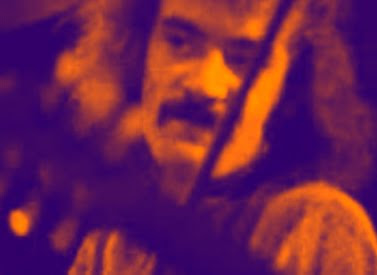
Clive Bunker was, along with Glen Cornick, Mick Abrahams, and Ian Anderson, a co-founder of Jethro Tull. Their original drummer, he lasted in the lineup up to and including their critical high-water mark, Aqualung. Bunker was born and raised in Luton, Bedfordshire, and came of age during the early-’60s British beat boom. He’d initially aspired to play the guitar but, upon realizing how limited his talent was on that instrument, turned instead to the drums — his inspirations included not only renowned American jazz figures such as Buddy  Rich but also one slightly older British contemporary of his, the Hollies’ Bobby Elliott. By the mid-’60s, Bunker had become a serious blues enthusiast — he and a friend, Mick Abrahams, became members of a blues band called McGregor’s Engine in 1967 when they crossed paths with Anderson and Cornick, who were members of another band that was in the process of breaking up. The four decided to join forces in what became known as Jethro Tull, playing a mix of rock, blues, and folk music.
Rich but also one slightly older British contemporary of his, the Hollies’ Bobby Elliott. By the mid-’60s, Bunker had become a serious blues enthusiast — he and a friend, Mick Abrahams, became members of a blues band called McGregor’s Engine in 1967 when they crossed paths with Anderson and Cornick, who were members of another band that was in the process of breaking up. The four decided to join forces in what became known as Jethro Tull, playing a mix of rock, blues, and folk music.
The group began evolving away from those origins almost as soon as the bandmembers started playing regularly. Though their first album, This Was, reflected their original commitment to the blues, and showed the influence of acts such as Cream and other blues-based bands, it was also a fine showcase for the kind of playing that Bunker liked. Alas, by the time it was released, the group was already moving away from jazz and blues and Abrahams  – the most committed to the blues of any of them — was out of the lineup by the end of 1968. Cornick left next, but Bunker was there for the entire three-album run-up to their commercial and critical triumph with Aqualung, including the group’s early tours of the United States. He wasn’t comfortable with the more complex progressive rock elements that were starting to manifest themselves in Anderson’s writing and the group’s sound, however, and had also decided to get married — his exit from the band followed soon after. He was succeeded by Barriemore Barlow, and over the next few years Bunker concentrated on the closer-to-home endeavors of running a dog kennel and pursuing his original field of engineering.
– the most committed to the blues of any of them — was out of the lineup by the end of 1968. Cornick left next, but Bunker was there for the entire three-album run-up to their commercial and critical triumph with Aqualung, including the group’s early tours of the United States. He wasn’t comfortable with the more complex progressive rock elements that were starting to manifest themselves in Anderson’s writing and the group’s sound, however, and had also decided to get married — his exit from the band followed soon after. He was succeeded by Barriemore Barlow, and over the next few years Bunker concentrated on the closer-to-home endeavors of running a dog kennel and pursuing his original field of engineering.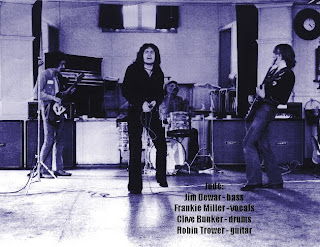

Clive Bunker was, along with Glen Cornick, Mick Abrahams, and Ian Anderson, a co-founder of Jethro Tull. Their original drummer, he lasted in the lineup up to and including their critical high-water mark, Aqualung. Bunker was born and raised in Luton, Bedfordshire, and came of age during the early-’60s British beat boom. He’d initially aspired to play the guitar but, upon realizing how limited his talent was on that instrument, turned instead to the drums — his inspirations included not only renowned American jazz figures such as Buddy  Rich but also one slightly older British contemporary of his, the Hollies’ Bobby Elliott. By the mid-’60s, Bunker had become a serious blues enthusiast — he and a friend, Mick Abrahams, became members of a blues band called McGregor’s Engine in 1967 when they crossed paths with Anderson and Cornick, who were members of another band that was in the process of breaking up. The four decided to join forces in what became known as Jethro Tull, playing a mix of rock, blues, and folk music.
Rich but also one slightly older British contemporary of his, the Hollies’ Bobby Elliott. By the mid-’60s, Bunker had become a serious blues enthusiast — he and a friend, Mick Abrahams, became members of a blues band called McGregor’s Engine in 1967 when they crossed paths with Anderson and Cornick, who were members of another band that was in the process of breaking up. The four decided to join forces in what became known as Jethro Tull, playing a mix of rock, blues, and folk music.
The group began evolving away from those origins almost as soon as the bandmembers started playing regularly. Though their first album, This Was, reflected their original commitment to the blues, and showed the influence of acts such as Cream and other blues-based bands, it was also a fine showcase for the kind of playing that Bunker liked. Alas, by the time it was released, the group was already moving away from jazz and blues and Abrahams  – the most committed to the blues of any of them — was out of the lineup by the end of 1968. Cornick left next, but Bunker was there for the entire three-album run-up to their commercial and critical triumph with Aqualung, including the group’s early tours of the United States. He wasn’t comfortable with the more complex progressive rock elements that were starting to manifest themselves in Anderson’s writing and the group’s sound, however, and had also decided to get married — his exit from the band followed soon after. He was succeeded by Barriemore Barlow, and over the next few years Bunker concentrated on the closer-to-home endeavors of running a dog kennel and pursuing his original field of engineering.
– the most committed to the blues of any of them — was out of the lineup by the end of 1968. Cornick left next, but Bunker was there for the entire three-album run-up to their commercial and critical triumph with Aqualung, including the group’s early tours of the United States. He wasn’t comfortable with the more complex progressive rock elements that were starting to manifest themselves in Anderson’s writing and the group’s sound, however, and had also decided to get married — his exit from the band followed soon after. He was succeeded by Barriemore Barlow, and over the next few years Bunker concentrated on the closer-to-home endeavors of running a dog kennel and pursuing his original field of engineering.
By:
rflynn,
on 11/17/2010
Blog:
Tower Blog
(
Login to Add to MyJacketFlap)
JacketFlap tags:
Michael Jackson,
Brand X),
Charles Mingus,
Dann Glenn,
Dave Liebman,
Jaco Pastorius,
Jeff Beck,
Mike Bloomfield,
Eleven Eleven Orchestra,
Jeff Berlin,
Jennifer Batten,
John Goodsall,
Luther Tucker,
Monk Montgomery,
Percy Jones,
Wes Montgomery,
Music,
Tower Records Community Spotlight,
Add a tag

Dann Glenn (born May 30, 1950) is an American jazz fusion guitarist and composer, who has published and recorded a catalog of six symphonies, and released numerous jazz and avant garde albums, over the years.
Known for years as a bassist, Glenn became disenchanted playing the bass, and switched his primary instrument to that of electric guitar around 2003-04. Also an accomplished pianist, Glenn’s status as a multi-instrumentalist has served him well, on his jazz fusion and modern orchestral recordings.
Beginning in the 1970s, Dann Glenn’s career started as a rock musician, who later became a serious jazz player and classical composer. During his formative years he played with such musicians as Blues guitarists M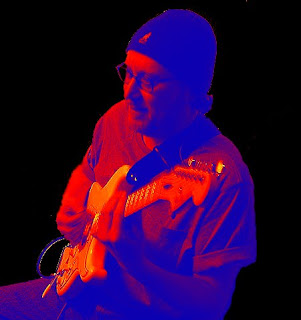 ichael Bloomfield and Luther Tucker.
ichael Bloomfield and Luther Tucker.
Dann was mentored by jazz bass legend Monk Montgomery (the first to play electric bass on a jazz record, with Lionel Hampton), brother to the legendary jazz guitarist Wes Montgomery and vibraphonist /pianist Buddy. After spending years on the road playing in show bands, Dann returned to Los Angeles in 1977, where he studied the Simandl method with bassist and pianist Herb Mickman.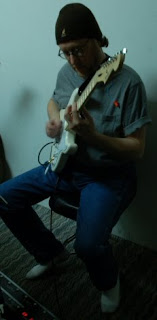
Dave Liebman came over to Dann’s condo years ago in North Hollywood when Dann was one of the first cats to have a contra bass guitar. Dave jumped up and called Steve Swallow in NYC. “Hey man…you ever hear of a six string bass?” After this Dann played and recorded with many musicians and bands in the LA area, while on the faculty at Musicians Institutes Bass Institute of Technology (1988-1991).
During his time in LA, Dann became close with bassists Jeff Berlin and Jaco Pastorius, who was murdered in 1987. Dann and Berlin went on to become lifelong friends, often associated in the music press because of their views on music education for bass guitar players.
The pair spoke out against popular gizmos such as “hand-grip squeezers,” “perfect pitch tapes” and the misinformation sometimes sold to unsuspecting students. Dann and Berlin contended that since music has been the same for hundreds of years in terms of its basic principles, such as harmony, it is music that should be taugh

Dann Glenn (born May 30, 1950) is an American jazz fusion guitarist and composer, who has published and recorded a catalog of six symphonies, and released numerous jazz and avant garde albums, over the years.
Known for years as a bassist, Glenn became disenchanted playing the bass, and switched his primary instrument to that of electric guitar around 2003-04. Also an accomplished pianist, Glenn’s status as a multi-instrumentalist has served him well, on his jazz fusion and modern orchestral recordings.
Beginning in the 1970s, Dann Glenn’s career started as a rock musician, who later became a serious jazz player and classical composer. During his formative years he played with such musicians as Blues guitarists M ichael Bloomfield and Luther Tucker.
ichael Bloomfield and Luther Tucker.
Dann was mentored by jazz bass legend Monk Montgomery (the first to play electric bass on a jazz record, with Lionel Hampton), brother to the legendary jazz guitarist Wes Montgomery and vibraphonist /pianist Buddy. After spending years on the road playing in show bands, Dann returned to Los Angeles in 1977, where he studied the Simandl method with bassist and pianist Herb Mickman.
Dave Liebman came over to Dann’s condo years ago in North Hollywood when Dann was one of the first cats to have a contra bass guitar. Dave jumped up and called Steve Swallow in NYC. “Hey man…you ever hear of a six string bass?” After this Dann played and recorded with many musicians and bands in the LA area, while on the faculty at Musicians Institutes Bass Institute of Technology (1988-1991).
During his time in LA, Dann became close with bassists Jeff Berlin and Jaco Pastorius, who was murdered in 1987. Dann and Berlin went on to become lifelong friends, often associated in the music press because of their views on music education for bass guitar players.
The pair spoke out against popular gizmos such as “hand-grip squeezers,” “perfect pitch tapes” and the misinformation sometimes sold to unsuspecting students. Dann and Berlin contended that since music has been the same for hundreds of years in terms of its basic principles, such as harmony, it is music that should be taugh
By:
rflynn,
on 10/28/2010
Blog:
Tower Blog
(
Login to Add to MyJacketFlap)
JacketFlap tags:
Grace Slick,
Tower Records Community Spotlight,
Aynsley Dunbar,
Ozzy Osbourne,
Jefferson Starship,
Marty Balin,
Sammy Hagar,
Elvin Bishop Group,
Mel Tormé,
Mickey Thomas,
Paul Kantner,
Music,
Beatles,
Add a tag

Mickey Thomas (born December 3, 1949, Cairo, Georgia) is an American singer.
He was inspired to take part in music after seeing a Beatles performance in 1965. He travelled to Atlanta with long time childhood friends Charles Connell, Lewis Oliver, Tommy Verran, and Walter Wight. Thomas, Connell, and Verran wound up in their first rock and roll band together. Verran was the lead singer at the time. They split up to go to different colleges but later reformed in 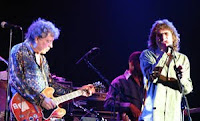 the early 1970s along with friend Bud Thomas as the “Jets”. While singing lead for the Jets in 1974, Thomas joined the Elvin Bishop Group as a harmony singer and eventually made it to lead vocals. His best known achievement was singing on Elvin Bishop’s chart hit ‘Fooled Around And Fell In Love’, a #3 single in 1976.
the early 1970s along with friend Bud Thomas as the “Jets”. While singing lead for the Jets in 1974, Thomas joined the Elvin Bishop Group as a harmony singer and eventually made it to lead vocals. His best known achievement was singing on Elvin Bishop’s chart hit ‘Fooled Around And Fell In Love’, a #3 single in 1976.
In April 1979, Thomas was asked to join Jefferson Starship, after the departure of Marty Balin and Grace Slick. In 1981 he recorded his second solo album Alive Alone. Former Elvin Bishop Group drummer Donny Baldwin became Starship’s drummer two years later when Aynsley Dunbar left.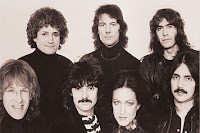
He spent most of the early eighties as the main vocalist of Jefferson Starship, performing several duets with Slick (who rejoined in 1981) and gaining greater influence in the band. After Paul Kantner left in 1984, Thomas was sole leader of the band. From 1985-1989 the newly dubbed ‘Starship’ scored some of their biggest hits. When Grace Slick left again in 1988, Thomas sang all lead vocals – in a band that was formed when he was just 15 years old. But their fortunes as pop music artists soon ran out. A tour was cancelled after Thomas was attacked in a bar and required facial reconstruction surgery. (His assailant was Donny Baldwin who chose to resign after the incident.)
He has also appeared in the 1989 film Dream a Little Dream as well as having recorded the film’s titled theme song and its duet version with Mel Tormé for the soundtrack. The duet version was also played during the end of the film.

Mickey Thomas (born December 3, 1949, Cairo, Georgia) is an American singer.
He was inspired to take part in music after seeing a Beatles performance in 1965. He travelled to Atlanta with long time childhood friends Charles Connell, Lewis Oliver, Tommy Verran, and Walter Wight. Thomas, Connell, and Verran wound up in their first rock and roll band together. Verran was the lead singer at the time. They split up to go to different colleges but later reformed in  the early 1970s along with friend Bud Thomas as the “Jets”. While singing lead for the Jets in 1974, Thomas joined the Elvin Bishop Group as a harmony singer and eventually made it to lead vocals. His best known achievement was singing on Elvin Bishop’s chart hit ‘Fooled Around And Fell In Love’, a #3 single in 1976.
the early 1970s along with friend Bud Thomas as the “Jets”. While singing lead for the Jets in 1974, Thomas joined the Elvin Bishop Group as a harmony singer and eventually made it to lead vocals. His best known achievement was singing on Elvin Bishop’s chart hit ‘Fooled Around And Fell In Love’, a #3 single in 1976.
In April 1979, Thomas was asked to join Jefferson Starship, after the departure of Marty Balin and Grace Slick. In 1981 he recorded his second solo album Alive Alone. Former Elvin Bishop Group drummer Donny Baldwin became Starship’s drummer two years later when Aynsley Dunbar left.
He spent most of the early eighties as the main vocalist of Jefferson Starship, performing several duets with Slick (who rejoined in 1981) and gaining greater influence in the band. After Paul Kantner left in 1984, Thomas was sole leader of the band. From 1985-1989 the newly dubbed ‘Starship’ scored some of their biggest hits. When Grace Slick left again in 1988, Thomas sang all lead vocals – in a band that was formed when he was just 15 years old. But their fortunes as pop music artists soon ran out. A tour was cancelled after Thomas was attacked in a bar and required facial reconstruction surgery. (His assailant was Donny Baldwin who chose to resign after the incident.)
He has also appeared in the 1989 film Dream a Little Dream as well as having recorded the film’s titled theme song and its duet version with Mel Tormé for the soundtrack. The duet version was also played during the end of the film.
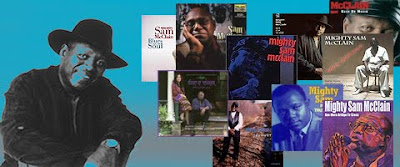 “America’s best purveyor of red-clay soul blues…”
“America’s best purveyor of red-clay soul blues…”Sam McClain was born on the northern edge of the Bible Belt in Monroe, Louisiana in 1943. As a five year old, he began singing in his mother’s Gospel Church, loving every bit of that attention!
He left home when he was thirteen to escape an abusive stepfather and followed local R&B guitarist, “Little Melvin” Underwood through the Chitlin Circuit, first as his valet and then as lead vocalist himself at 15 .
.
While singing at the 506 Club in Pensacola, Florida he was introduced to Producer/ DJ, “Papa Don” Schroeder and in 1966, Sam recorded Patsy Cline’s “Sweet Dreams” – his first real success. Several recording sessions at Muscle Shoals produced singles, “Fannie-May” and “In the Same Old Way”. For fifteen years, first in Nashville, then in New Orleans Sam worked menial jobs and was forced to sell his plasma while he was homeless. From cotton fields to the Apollo Theater to the park bench, all while living the songs that would jump-start his career in the mid-1980. New Orleans own, Neville Brothers extended themselves at this lowest of times. Sam was offered a chance to tour and record in Japan in 1989. “Live in Japan”, featuring legendary Wayne Bennett is a fine recording, much sought after by fans worldwide.
By the early 1990’s Sam networked his way to New England through his participation in the “Hubert Sumlin Blues Party” project (produced by Hammond Scott on Black Top), which involved many Boston based musicians. These friends provided encouragement and collaborations, which led to Joe Harley and AudioQuest Music. The results were the successful releases, “Give It Up To Love” and “Keep On Movin“. After his move to New Hampshire the momentum continued to build with “Sledgehammer Soul and Down Home Blues“. In 1998 Sam had two releases, “
 “America’s best purveyor of red-clay soul blues…”
“America’s best purveyor of red-clay soul blues…”Sam McClain was born on the northern edge of the Bible Belt in Monroe, Louisiana in 1943. As a five year old, he began singing in his mother’s Gospel Church, loving every bit of that attention!
He left home when he was thirteen to escape an abusive stepfather and followed local R&B guitarist, “Little Melvin” Underwood through the Chitlin Circuit, first as his valet and then as lead vocalist himself at 15 .
.
While singing at the 506 Club in Pensacola, Florida he was introduced to Producer/ DJ, “Papa Don” Schroeder and in 1966, Sam recorded Patsy Cline’s “Sweet Dreams” – his first real success. Several recording sessions at Muscle Shoals produced singles, “Fannie-May” and “In the Same Old Way”. For fifteen years, first in Nashville, then in New Orleans Sam worked menial jobs and was forced to sell his plasma while he was homeless. From cotton fields to the Apollo Theater to the park bench, all while living the songs that would jump-start his career in the mid-1980. New Orleans own, Neville Brothers extended themselves at this lowest of times. Sam was offered a chance to tour and record in Japan in 1989. “Live in Japan”, featuring legendary Wayne Bennett is a fine recording, much sought after by fans worldwide.
By the early 1990’s Sam networked his way to New England through his participation in the “Hubert Sumlin Blues Party” project (produced by Hammond Scott on Black Top), which involved many Boston based musicians. These friends provided encouragement and collaborations, which led to Joe Harley and AudioQuest Music. The results were the successful releases, “Give It Up To Love” and “Keep On Movin“. After his move to New Hampshire the momentum continued to build with “Sledgehammer Soul and Down Home Blues“. In 1998 Sam had two releases, “

Sam Andrew (born Sam Houston Andrew III, 18 December 1941, in Taft, California, U.S.) is a musician, singer, songwriter, composer, artist and founding member and guitarist of Big Brother and the Holding Company. During his career as musician and composer, Andrew has had three platinum albums and two hit singles. His songs have been used in numerous major motion picture soundtracks and documentaries.
As the son of a military father, he moved a great deal as a child. Sam developed a skill for music at a very early age. By the time he was fifteen living in Okinawa, he already had his own band, called the “Cool Notes”. His early influences were Chuck Berry, Bo Diddley, and Little Richard. He also listened to a great deal of Delta blues. Not only did Sam have his own band at age fifteen, but he also had his own weekly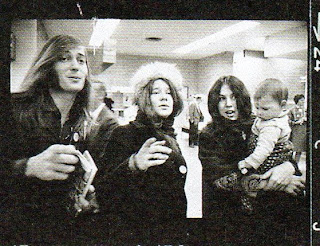 TV show, an Okinawan version of American Bandstand.His brother Leland Andrew frequently stated his brother was the Benny Goodman of Japan.
TV show, an Okinawan version of American Bandstand.His brother Leland Andrew frequently stated his brother was the Benny Goodman of Japan.
Shortly after Sam graduated from high school his father was transferred to Hamilton Air Force Base in northern California. It was during this period that Sam started attending classes at the University of San Francisco and got involved in the San Francisco folk music scene of the early 1960s. But it was not until he returned from a two-year stay in Paris that he met Peter Albin at 1090 Page Street.
As Big Brother began to gel, Sam brought many songs into the band. He has been a prolific songwriter all of his life, penning his first tune at the age of six. Of his early compositions, “Call on Me” and “Combination of the Two” have been two of Big Brother’s most enduring classic tracks.. Sam continues today in his original role as musical director of the band.
Janis Joplin was recruited by band manager Chet Helms to join Big Brother as le

Sam Andrew (born Sam Houston Andrew III, 18 December 1941, in Taft, California, U.S.) is a musician, singer, songwriter, composer, artist and founding member and guitarist of Big Brother and the Holding Company. During his career as musician and composer, Andrew has had three platinum albums and two hit singles. His songs have been used in numerous major motion picture soundtracks and documentaries.
As the son of a military father, he moved a great deal as a child. Sam developed a skill for music at a very early age. By the time he was fifteen living in Okinawa, he already had his own band, called the “Cool Notes”. His early influences were Chuck Berry, Bo Diddley, and Little Richard. He also listened to a great deal of Delta blues. Not only did Sam have his own band at age fifteen, but he also had his own weekly TV show, an Okinawan version of American Bandstand.His brother Leland Andrew frequently stated his brother was the Benny Goodman of Japan.
TV show, an Okinawan version of American Bandstand.His brother Leland Andrew frequently stated his brother was the Benny Goodman of Japan.
Shortly after Sam graduated from high school his father was transferred to Hamilton Air Force Base in northern California. It was during this period that Sam started attending classes at the University of San Francisco and got involved in the San Francisco folk music scene of the early 1960s. But it was not until he returned from a two-year stay in Paris that he met Peter Albin at 1090 Page Street.
As Big Brother began to gel, Sam brought many songs into the band. He has been a prolific songwriter all of his life, penning his first tune at the age of six. Of his early compositions, “Call on Me” and “Combination of the Two” have been two of Big Brother’s most enduring classic tracks.. Sam continues today in his original role as musical director of the band.
Janis Joplin was recruited by band manager Chet Helms to join Big Brother as le

 Internationally Acclaimed Guitarist, Composer and Producer Takes Listeners on Powerful Personal Musical Journey Chronicling Events Leading up to His Family’s Captivity and Liberation During WWII in Indonesia and Holland.
Internationally Acclaimed Guitarist, Composer and Producer Takes Listeners on Powerful Personal Musical Journey Chronicling Events Leading up to His Family’s Captivity and Liberation During WWII in Indonesia and Holland.
LOS ANGELES, CA–(Marketwire) - For more than two decades guitarist, composer and producer David Becker has continued to define himself as one of the best and most unique voices in contemporary jazz guitar by combining diverse influences and a passion for the new and different. And, in conjunction with the 65th anniversary of the atomic bombings in Japan, August 6, he announces the release of his latest recording, BATAVIA, with his world renowned trio the David Becker Tribune, and takes us on his most personal journey yet.

As we enter the second phase of our publicity or should I say public awareness of the new project “Batavia”, I am struck by the amount of enthusiasm I have received. For those who have shown their support with only a thumbs up, please know by purchasing the CD, you are getting us one brick closer to a memorial. Help give these two ladies and the 1000’s of other Dutch POW’s their dignity back! ~David Becker on his FB pa

 Internationally Acclaimed Guitarist, Composer and Producer Takes Listeners on Powerful Personal Musical Journey Chronicling Events Leading up to His Family’s Captivity and Liberation During WWII in Indonesia and Holland.
Internationally Acclaimed Guitarist, Composer and Producer Takes Listeners on Powerful Personal Musical Journey Chronicling Events Leading up to His Family’s Captivity and Liberation During WWII in Indonesia and Holland.
LOS ANGELES, CA–(Marketwire) - For more than two decades guitarist, composer and producer David Becker has continued to define himself as one of the best and most unique voices in contemporary jazz guitar by combining diverse influences and a passion for the new and different. And, in conjunction with the 65th anniversary of the atomic bombings in Japan, August 6, he announces the release of his latest recording, BATAVIA, with his world renowned trio the David Becker Tribune, and takes us on his most personal journey yet.

As we enter the second phase of our publicity or should I say public awareness of the new project “Batavia”, I am struck by the amount of enthusiasm I have received. For those who have shown their support with only a thumbs up, please know by purchasing the CD, you are getting us one brick closer to a memorial. Help give these two ladies and the 1000′s of other Dutch POW’s their dignity back! ~David Becker on his FB pa
By:
rflynn,
on 9/20/2010
Blog:
Tower Blog
(
Login to Add to MyJacketFlap)
JacketFlap tags:
Music,
Stories,
Foreigner,
Celtic Fire,
Aerosmith,
Led Zeppelin,
Kiss,
Billy Joel,
Cheater,
Black Sheep,
The Rolling Stones,
Marilyn Manson,
JIMI HENDRIX,
Tower Records Community Spotlight,
Iron Maiden,
Quiet Riot,
STEVE WINWOOD,
Peter Frampton,
The Cure,
David Lee Roth),
Anthrax,
Argent,
Billy Sheehan,
DDrive,
Don Mancuso,
Hall & Oats,
Ian Lloyd,
Lou Gramm Band,
Mr. Big,
Peter Criss,
Phil Naro,
Sebastian Bach,
Steven Tyler,
Talas,
Ted Nugent and Procol Harum,
Trans Siberian Orchestra.,
White Lion,
Yngwie J. Malmsteen's Rising Force,
Add a tag
 DDrive
DDrive
DDrive began rocking the Northeast in 2004 when guitarist Don Mancuso (The Lou Gramm Band, Black Sheep, Cheater, and Celtic Fire) put together his second solo recording effort after finishing tracks for singer Phil Naro’s (Talas, Peter Criss & 24K) “Glass Mountain” project. Mancuso and Naro joined forces to write the first self-titled DDrive album. Sin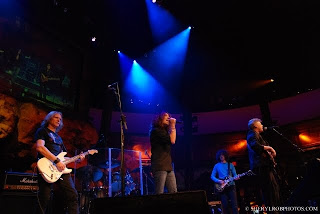 ger Lou Gramm (The Lou Gramm Band, Foreigner, Black Sheep) heard the demos for the D Drive CD, asked if he could come in as guest vocalist/co-writer, and they obliged! Canadian producer Steve Major rounded out the direction and production.
ger Lou Gramm (The Lou Gramm Band, Foreigner, Black Sheep) heard the demos for the D Drive CD, asked if he could come in as guest vocalist/co-writer, and they obliged! Canadian producer Steve Major rounded out the direction and production.
Released in 2005, the first DDrive CD received critical acclaim and airplay in the US, Australia, and Europe. The band’s signature sound blends strong classic rock roots with a modern edge sound all its own. The first DDrive CD did so well that Mancuso and Naro decided to put together the band’s second release in 2007 entitled “Straight Up The Middle.” The new album has received accolades from a rapidly growing legion of D Drive fans, and is in its second pressing. D Drive released a video in summer ‘08.
3D is the long awaited follow up to “Straight Up The Middle” (2007) and promises to be an album that will be enjoyed fans for generations to come. 3D has great significance as well, not only as our 3rd release but the CD housed in a special edition 3D cover with 3D Glasses and 11 new rocking tracks and featuring some special guests like Long time friend Billy Sheehan (Mr. Big, Talas, David Lee Roth). on the first single Dig Down
Don Mancuso
High energy. Pure joy. There’s simply no other way to describe Don Mancuso’s guitar style. Mancuso’s acclaimed artistry, versatility and professionalism have earned him the respect of his peers plus the accolades of worldwide audiences.
The Rochester, NY native began playing guitar at the age of six and began playing in earnest when he wa
 DDrive
DDrive
DDrive began rocking the Northeast in 2004 when guitarist Don Mancuso (The Lou Gramm Band, Black Sheep, Cheater, and Celtic Fire) put together his second solo recording effort after finishing tracks for singer Phil Naro’s (Talas, Peter Criss & 24K) “Glass Mountain” project. Mancuso and Naro joined forces to write the first self-titled DDrive album. Sin ger Lou Gramm (The Lou Gramm Band, Foreigner, Black Sheep) heard the demos for the D Drive CD, asked if he could come in as guest vocalist/co-writer, and they obliged! Canadian producer Steve Major rounded out the direction and production.
ger Lou Gramm (The Lou Gramm Band, Foreigner, Black Sheep) heard the demos for the D Drive CD, asked if he could come in as guest vocalist/co-writer, and they obliged! Canadian producer Steve Major rounded out the direction and production.
Released in 2005, the first DDrive CD received critical acclaim and airplay in the US, Australia, and Europe. The band’s signature sound blends strong classic rock roots with a modern edge sound all its own. The first DDrive CD did so well that Mancuso and Naro decided to put together the band’s second release in 2007 entitled “Straight Up The Middle.” The new album has received accolades from a rapidly growing legion of D Drive fans, and is in its second pressing. D Drive released a video in summer ’08.
3D is the long awaited follow up to “Straight Up The Middle” (2007) and promises to be an album that will be enjoyed fans for generations to come. 3D has great significance as well, not only as our 3rd release but the CD housed in a special edition 3D cover with 3D Glasses and 11 new rocking tracks and featuring some special guests like Long time friend Billy Sheehan (Mr. Big, Talas, David Lee Roth). on the first single Dig Down
Don Mancuso
High energy. Pure joy. There’s simply no other way to describe Don Mancuso’s guitar style. Mancuso’s acclaimed artistry, versatility and professionalism have earned him the respect of his peers plus the accolades of worldwide audiences.
The Rochester, NY native began playing guitar at the age of six and began playing in earnest when he wa
By:
rflynn,
on 9/20/2010
Blog:
Tower Blog
(
Login to Add to MyJacketFlap)
JacketFlap tags:
Journey,
Dick Clark,
Paul Collins,
Bill Murray,
Tower News,
Tower Records Community Spotlight,
Blondie,
Kenny Loggins),
American Bandstand,
Peter Case,
Plimsouls,
power pop,
The Beat,
The English Beat,
The Knack,
The Nerves,
Add a tag
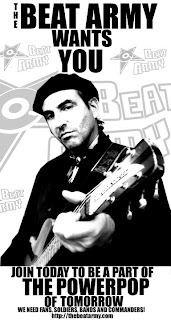
Paul Collins is an American writer, author, music producer, and multi-instrumentalist. He is best known for his work in the power pop groups The Nerves and The Beat.
Paul Collins has released several solo projects with his alternative country group The Paul Collins Band, who play Americana music inspired by country rock and folk rock. Collins also continues to tour with his The Beat, his longtime rock group which combines power pop with Alternative rock and punk rock.
Paul Collins began his career as the drummer (and sometime singer & songwriter) in an influential Los Angeles power pop trio The Nerves, alongside Jack Lee and future Plimsouls frontman Peter Case. The band are best remembered for “Hanging on the Telephone”, a song later made famous by Blondie. After The Nerves’ demise, Paul Collins formed his own group as singer, rhythm guitarist, and songwriter for The Beat, sometimes called The Paul Collins Beat to avoid confusion with the British ska group also called The Beat (or The English Beat in the US).

Renamed the Paul Collins’ Beat in the early 1980s, the band became icons in the genre of indie rock Paul Collins’ Beat were in a constant state of touring and recording around the world. They appeared on Dick Clark’s American Bandstand and contributed a song to the Caddyshack soundtrack, alongside Journey, Bill Murray and Kenny Loggins. The band broke up in 1989, following the release of their sixth album, One Night. Paul Collins continues to perform to this day with a new version of Paul Collins’ Beat, in addition to his solo project, an all star country-rock band called the Paul Collins Band.
Since the early 1980s, Collins has been living on and off in Spain, where he has a particularly strong following, and spends most of his time performing in Europe and Japan, although he still holds citizenship in the United States. In fact, his two former wives are from Spain. During this time, he p![]()

Paul Collins is an American writer, author, music producer, and multi-instrumentalist. He is best known for his work in the power pop groups The Nerves and The Beat.
Paul Collins has released several solo projects with his alternative country group The Paul Collins Band, who play Americana music inspired by country rock and folk rock. Collins also continues to tour with his The Beat, his longtime rock group which combines power pop with Alternative rock and punk rock.
Paul Collins began his career as the drummer (and sometime singer & songwriter) in an influential Los Angeles power pop trio The Nerves, alongside Jack Lee and future Plimsouls frontman Peter Case. The band are best remembered for “Hanging on the Telephone”, a song later made famous by Blondie. After The Nerves’ demise, Paul Collins formed his own group as singer, rhythm guitarist, and songwriter for The Beat, sometimes called The Paul Collins Beat to avoid confusion with the British ska group also called The Beat (or The English Beat in the US).

Renamed the Paul Collins’ Beat in the early 1980s, the band became icons in the genre of indie rock Paul Collins’ Beat were in a constant state of touring and recording around the world. They appeared on Dick Clark’s American Bandstand and contributed a song to the Caddyshack soundtrack, alongside Journey, Bill Murray and Kenny Loggins. The band broke up in 1989, following the release of their sixth album, One Night. Paul Collins continues to perform to this day with a new version of Paul Collins’ Beat, in addition to his solo project, an all star country-rock band called the Paul Collins Band.
Since the early 1980s, Collins has been living on and off in Spain, where he has a particularly strong following, and spends most of his time performing in Europe and Japan, although he still holds citizenship in the United States. In fact, his two former wives are from Spain. During this time, he p![]()
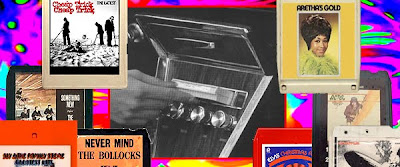
Stereo 8, commonly known as the eight-track cartridge, eight-track tape, or eight-track, is a magnetic tape sound recording technology, popular from the mid-1960s to the early 1980s, primarily in the United States — it was relatively unknown in many European countries. Stereo 8 was created in 1964 by a consortium led by Bill Lear of Lear Jet Corporation, along with Ampex, Ford Motor Company, General Motors, Motorola and RCA Victor Records (RCA). It was a further development of the similar Stereo-Pak four-track cartridge created by Earl “Madman” Muntz. A later quadraphonic version of the format was announced by RCA in April 1970 and first known as Quad-8, then later changed to just Q8.
The original format for magnetic tape sound reproduction was reel-to-reel audio tape recording, first made widely available in the late 1940s. However, threading tape into the recorders was more difficult than simply putting a disc onto a phonograph player. Manufacturers introduced a succession of cartridges which held the tape inside a metal or plastic housing to eliminate handling. The first was RCA, which in 1958 introduced a cartridge system called Sound Tape or Magazine Cartridge Loading, but until the introduction of the Compact Cassette in 1963 and Stereo 8 in 1965, none was very successful.
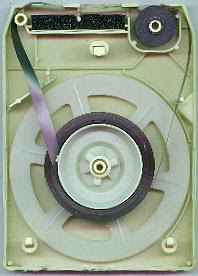
The inside of an 8-track cartridge. The black rubber pinch roller is at upper right.
The endless loop tape cartridge was first designed in 1952 by Bernard Cousino around a single reel carrying a continuous loop of standard 1/4-inch, plastic, oxide-coated recording tape running at 3.75 in.(9.5 cm) per second. Program starts and stops were signaled by a one-inch-long metal foil that activates the track-change sensor. (Bill Lear had tried to create an endless-loop wire recorder in the 1940s, but gave up in 1946, even though endless-loop 8 mm film cartridges were already in use for him to copy from. He would be inspired by Earl Muntz’s four-track design in the early 1960s.)
Inventor George Eash, also from Toledo, invented a cartridge design in 1954, called the Fidelipac. The Eash cartridge was later licensed by manufacturers, notably the Collins Radio Corporation, which first introduced a cartridge system for broadcasting at the National Association of Broadcasters 1959 annual show. Fidelipac cartridges (nicknamed “carts” by DJs and radio engineers) were used by many radio stations for commercials, jingles, and other short items right up until the late 1990s when digital media took over. Eash later formed Fidelipac Corporation to manufacture and ma

Stereo 8, commonly known as the eight-track cartridge, eight-track tape, or eight-track, is a magnetic tape sound recording technology, popular from the mid-1960s to the early 1980s, primarily in the United States — it was relatively unknown in many European countries. Stereo 8 was created in 1964 by a consortium led by Bill Lear of Lear Jet Corporation, along with Ampex, Ford Motor Company, General Motors, Motorola and RCA Victor Records (RCA). It was a further development of the similar Stereo-Pak four-track cartridge created by Earl “Madman” Muntz. A later quadraphonic version of the format was announced by RCA in April 1970 and first known as Quad-8, then later changed to just Q8.
The original format for magnetic tape sound reproduction was reel-to-reel audio tape recording, first made widely available in the late 1940s. However, threading tape into the recorders was more difficult than simply putting a disc onto a phonograph player. Manufacturers introduced a succession of cartridges which held the tape inside a metal or plastic housing to eliminate handling. The first was RCA, which in 1958 introduced a cartridge system called Sound Tape or Magazine Cartridge Loading, but until the introduction of the Compact Cassette in 1963 and Stereo 8 in 1965, none was very successful.

The inside of an 8-track cartridge. The black rubber pinch roller is at upper right.
The endless loop tape cartridge was first designed in 1952 by Bernard Cousino around a single reel carrying a continuous loop of standard 1/4-inch, plastic, oxide-coated recording tape running at 3.75 in.(9.5 cm) per second. Program starts and stops were signaled by a one-inch-long metal foil that activates the track-change sensor. (Bill Lear had tried to create an endless-loop wire recorder in the 1940s, but gave up in 1946, even though endless-loop 8 mm film cartridges were already in use for him to copy from. He would be inspired by Earl Muntz’s four-track design in the early 1960s.)
Inventor George Eash, also from Toledo, invented a cartridge design in 1954, called the Fidelipac. The Eash cartridge was later licensed by manufacturers, notably the Collins Radio Corporation, which first introduced a cartridge system for broadcasting at the National Association of Broadcasters 1959 annual show. Fidelipac cartridges (nicknamed “carts” by DJs and radio engineers) were used by many radio stations for commercials, jingles, and other short items right up until the late 1990s when digital media took over. Eash later formed Fidelipac Corporation to manufacture and ma
By:
rflynn,
on 9/9/2010
Blog:
Tower Blog
(
Login to Add to MyJacketFlap)
JacketFlap tags:
Mick Jagger,
Stephen Stills,
Phoenix,
Straight No Chaser,
Sarah McLachlan,
The Rolling Stones,
Taj Mahal,
Today's Listening,
The Who,
Ray Charles,
Peter Wolf,
Tommy Bolin,
Ringo Starr,
Sass Jordan,
Tom Petty,
Stone Temple Pilots,
The Gaslight Anthem,
The Staple Singers,
Shelby Lynne,
Teenage Fanclub,
Mike Bloomfield,
Moby Grape,
MOJO,
Neil Diamond,
Nils Lofgren,
Pat Boone,
Peter Paul & Mary,
Pharcyde,
Rick Nelson,
Roger McGuinn,
Shuggie Otis,
Solomon Burke,
Stuedabakerbrown,
The Apples In Stereo,
The Beastie Boys,
The Blues Project,
The Byrds,
The Len Price 3,
The Nadas,
The New Pornographers,
The Tubes,
Thelonious Monster,
Tom Petty & the Heartbreakers,
Toots & The Maytals,
Tracy Bonham,
Tracy Nelson,
Trisha Yearwood,
Bob Dylan,
Lulu,
George Harrison,
Hanson,
Jack Johnson,
Gene Pitney,
Joe Cocker,
JIMI HENDRIX,
Labelle,
Howard Jones,
Matt Morris,
Jay-Z,
Gary Lewis,
Gerry Rafferty,
Grace Potter & the Nocturnals,
Green On Red,
Janis Ian,
Joe Ely,
John Martyn,
Josiah Wolf,
Keely Smith,
Lance Lopez,
Lorraine Ellison,
Lynyrd Skynyrd,
Martin Sexton,
Mayall,
Doves,
Alice Cooper,
Field Music,
Tower News,
Forrest Gump,
A Rocket to the Moon,
Bill Wyman,
B. B. King,
Beth Nielsen Chapman,
BB King,
Bettye Lavette,
Al Kooper,
Alvin Lee,
Anton Fig,
Atlanta Rhythm Section,
Betty Wright,
Blood Sweat & Tears,
Brandi Carlile,
Carmen MacRae,
Clapton,
Dave Barnes,
Donnie Hathaway,
Eddie & The Hot Rods,
Freddie Cannon,
Widespread Panic,
Music,
Add a tag
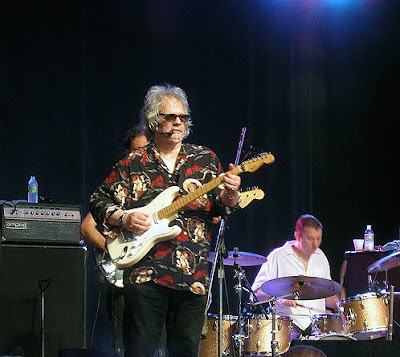
Al Kooper is often referred to as the “Zelig” or “Forrest Gump” of Rock. Somehow, in a career that spans 50 years, he has managed to turn up at key points in the last five decades. In 1958, Koop began his professional career as guitarist in The Royal Teens (“Short Shorts”). He metamorphisized into a Tin Pan Alley songwriter with cuts by Gary Lewis, Gene Pitney, Keely Smith, Carmen MacRae, Pat Boone, Freddie Cannon, Lulu, Lorraine Ellison, Do nnie Hathaway and later was sampled by The Beastie Boys, Jay-Z, Pharcyde, and Alchemist to name but a few. In the mid-sixties, Al was a member of The Blues Project and then founded Blood Sweat & Tears, remaining only for their debut album “Child Is Father To The Man.” He then slipped his producer hat on and began with the top ten album “SuperSession” in 1968 featuring Mike Bloomfield & Stephen Stills. He is well known for his organ playing on Bob Dylan’s “Like A Rolling Stone.” He played off & on with Dylan for many years, live and in the studio. His playing skills have graced the works of The Rolling Stones, George Harrison, The Who, Jimi Hendrix, Peter Paul & Mary, Tom Petty, Joe Cocker, BB King, Taj Mahal, Alice Cooper, Roger McGuinn, Betty Wright, Trisha Yearwood, Tracy Nelson and scores more. Major moments include playing piano, organ and FRENCH HORN for The Rolling Stones on “You Cant Always Get What You Want,” keyboards on George Harrison’s #1 hit “All Those Years Ago,” keys on “The Who Sell Out,” and on “Electric Ladyland” for Jimi Hendrix.
nnie Hathaway and later was sampled by The Beastie Boys, Jay-Z, Pharcyde, and Alchemist to name but a few. In the mid-sixties, Al was a member of The Blues Project and then founded Blood Sweat & Tears, remaining only for their debut album “Child Is Father To The Man.” He then slipped his producer hat on and began with the top ten album “SuperSession” in 1968 featuring Mike Bloomfield & Stephen Stills. He is well known for his organ playing on Bob Dylan’s “Like A Rolling Stone.” He played off & on with Dylan for many years, live and in the studio. His playing skills have graced the works of The Rolling Stones, George Harrison, The Who, Jimi Hendrix, Peter Paul & Mary, Tom Petty, Joe Cocker, BB King, Taj Mahal, Alice Cooper, Roger McGuinn, Betty Wright, Trisha Yearwood, Tracy Nelson and scores more. Major moments include playing piano, organ and FRENCH HORN for The Rolling Stones on “You Cant Always Get What You Want,” keyboards on George Harrison’s #1 hit “All Those Years Ago,” keys on “The Who Sell Out,” and on “Electric Ladyland” for Jimi Hendrix.
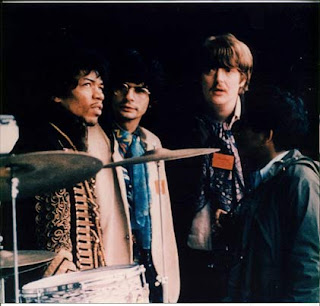
AL with JIMI HENDRIX and CHAS CHANDLER
As a producer he is best known for discovering Lynyrd Skynyrd and producing their first three albums including “Sweet Home Alabama,” “Free Bird,” &ldqu

Al Kooper is often referred to as the “Zelig” or “Forrest Gump” of Rock. Somehow, in a career that spans 50 years, he has managed to turn up at key points in the last five decades. In 1958, Koop began his professional career as guitarist in The Royal Teens (“Short Shorts”). He metamorphisized into a Tin Pan Alley songwriter with cuts by Gary Lewis, Gene Pitney, Keely Smith, Carmen MacRae, Pat Boone, Freddie Cannon, Lulu, Lorraine Ellison, Do nnie Hathaway and later was sampled by The Beastie Boys, Jay-Z, Pharcyde, and Alchemist to name but a few. In the mid-sixties, Al was a member of The Blues Project and then founded Blood Sweat & Tears, remaining only for their debut album “Child Is Father To The Man.” He then slipped his producer hat on and began with the top ten album “SuperSession” in 1968 featuring Mike Bloomfield & Stephen Stills. He is well known for his organ playing on Bob Dylan’s “Like A Rolling Stone.” He played off & on with Dylan for many years, live and in the studio. His playing skills have graced the works of The Rolling Stones, George Harrison, The Who, Jimi Hendrix, Peter Paul & Mary, Tom Petty, Joe Cocker, BB King, Taj Mahal, Alice Cooper, Roger McGuinn, Betty Wright, Trisha Yearwood, Tracy Nelson and scores more. Major moments include playing piano, organ and FRENCH HORN for The Rolling Stones on “You Cant Always Get What You Want,” keyboards on George Harrison’s #1 hit “All Those Years Ago,” keys on “The Who Sell Out,” and on “Electric Ladyland” for Jimi Hendrix.
nnie Hathaway and later was sampled by The Beastie Boys, Jay-Z, Pharcyde, and Alchemist to name but a few. In the mid-sixties, Al was a member of The Blues Project and then founded Blood Sweat & Tears, remaining only for their debut album “Child Is Father To The Man.” He then slipped his producer hat on and began with the top ten album “SuperSession” in 1968 featuring Mike Bloomfield & Stephen Stills. He is well known for his organ playing on Bob Dylan’s “Like A Rolling Stone.” He played off & on with Dylan for many years, live and in the studio. His playing skills have graced the works of The Rolling Stones, George Harrison, The Who, Jimi Hendrix, Peter Paul & Mary, Tom Petty, Joe Cocker, BB King, Taj Mahal, Alice Cooper, Roger McGuinn, Betty Wright, Trisha Yearwood, Tracy Nelson and scores more. Major moments include playing piano, organ and FRENCH HORN for The Rolling Stones on “You Cant Always Get What You Want,” keyboards on George Harrison’s #1 hit “All Those Years Ago,” keys on “The Who Sell Out,” and on “Electric Ladyland” for Jimi Hendrix.

AL with JIMI HENDRIX and CHAS CHANDLER
As a producer he is best known for discovering Lynyrd Skynyrd and producing their first three albums including “Sweet Home Alabama,” “Free Bird,” &ldqu
By:
rflynn,
on 9/9/2010
Blog:
Tower Blog
(
Login to Add to MyJacketFlap)
JacketFlap tags:
The Beatles,
Tower News,
A Hard Day's Night,
Tom Petty,
American Bandstand,
Dwight Twilley,
Leon Russell,
Phil Seymour,
Sam Phillips,
Add a tag
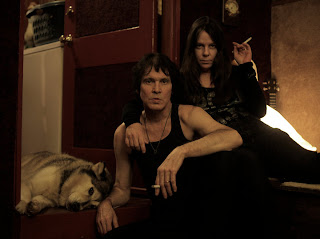
Dwight Twilley (born June 6, 1951, Tulsa, Oklahoma) is an American pop/rock singer and songwriter, best known for the Top 20 hit singles “I’m on Fire” (1975) and “Girls” (1984). Twilley and Phil Seymour performed as the Dwight Twilley Band through 1978, and Twilley has performed as a solo act since then.
Twilley and Phil Seymour met in Tulsa in 1967 at a theater where they had gone to see The Beatles’ A Hard Day’s Night, and soon began writing songs and recording together. They continued their partnership over the next several years under the name Oister. Twilley wrote all the songs and played guitar and piano, Seymour played drums and bass, and both sang leads and harmonies. Guitarist Bill Pitcock IV played lead guitar on most of their tracks.
Twilley attended Edison High School and went to Northeastern Oklahoma A&M College from 1971 to 1973. Twilley and Seymour eventually decided to leave Tulsa and try to be discovered at a recording studio in Memphis, Tennessee. By sheer chance, the first studio that they wandered into was Sun Studio, where they met, according to Twilley, “some guy named Phillips.” After listening to a cassette of their folk/pop/country blend, Jerry Phillips (son of Sun founder Sam Phillips) referred them to the Tupelo, Mississippi studio of former Sun artist Ray Harris, whom both Twilley and Seymour credited for introducing them to rockabilly and adding a harder edge to their sound.
Ultimately, Twilley and Seymour went to Los Angeles to find a label, where they ironically signed with Shelter Records, a label co-owned by Denny Cordell and Tulsa’s Leon Russell, in 1974. Cordell promptly changed the group’s name from Oister to the Dwight Twilley Band, which set the seeds for future problems arising from Seymour’s anonymity in the partnership.
Their first single, “I’m on Fire”, reached #16 on the charts in 1975 with relatively little promotion, largely because the band was in England recording its first album, tentatively called Fire, with producer Robin Cable at Trident Studios. The photos used on the single’s picture sleeve  were low quality from a photo booth, even less professional than the band’s first promo picture (right). The unexpected success of the self-produced “I’m On Fire” caused most of the English tracks to be relegated to a second album, thereafter known as The B Album. Leon Russell then permitted the band to record new tracks at his 40-track home studio, where one of the engineers was R
were low quality from a photo booth, even less professional than the band’s first promo picture (right). The unexpected success of the self-produced “I’m On Fire” caused most of the English tracks to be relegated to a second album, thereafter known as The B Album. Leon Russell then permitted the band to record new tracks at his 40-track home studio, where one of the engineers was R

Dwight Twilley (born June 6, 1951, Tulsa, Oklahoma) is an American pop/rock singer and songwriter, best known for the Top 20 hit singles “I’m on Fire” (1975) and “Girls” (1984). Twilley and Phil Seymour performed as the Dwight Twilley Band through 1978, and Twilley has performed as a solo act since then.
Twilley and Phil Seymour met in Tulsa in 1967 at a theater where they had gone to see The Beatles’ A Hard Day’s Night, and soon began writing songs and recording together. They continued their partnership over the next several years under the name Oister. Twilley wrote all the songs and played guitar and piano, Seymour played drums and bass, and both sang leads and harmonies. Guitarist Bill Pitcock IV played lead guitar on most of their tracks.
Twilley attended Edison High School and went to Northeastern Oklahoma A&M College from 1971 to 1973. Twilley and Seymour eventually decided to leave Tulsa and try to be discovered at a recording studio in Memphis, Tennessee. By sheer chance, the first studio that they wandered into was Sun Studio, where they met, according to Twilley, “some guy named Phillips.” After listening to a cassette of their folk/pop/country blend, Jerry Phillips (son of Sun founder Sam Phillips) referred them to the Tupelo, Mississippi studio of former Sun artist Ray Harris, whom both Twilley and Seymour credited for introducing them to rockabilly and adding a harder edge to their sound.
Ultimately, Twilley and Seymour went to Los Angeles to find a label, where they ironically signed with Shelter Records, a label co-owned by Denny Cordell and Tulsa’s Leon Russell, in 1974. Cordell promptly changed the group’s name from Oister to the Dwight Twilley Band, which set the seeds for future problems arising from Seymour’s anonymity in the partnership.
Their first single, “I’m on Fire”, reached #16 on the charts in 1975 with relatively little promotion, largely because the band was in England recording its first album, tentatively called Fire, with producer Robin Cable at Trident Studios. The photos used on the single’s picture sleeve  were low quality from a photo booth, even less professional than the band’s first promo picture (right). The unexpected success of the self-produced “I’m On Fire” caused most of the English tracks to be relegated to a second album, thereafter known as The B Album. Leon Russell then permitted the band to record new tracks at his 40-track home studio, where one of the engineers was R
were low quality from a photo booth, even less professional than the band’s first promo picture (right). The unexpected success of the self-produced “I’m On Fire” caused most of the English tracks to be relegated to a second album, thereafter known as The B Album. Leon Russell then permitted the band to record new tracks at his 40-track home studio, where one of the engineers was R
By:
rflynn,
on 9/8/2010
Blog:
Tower Blog
(
Login to Add to MyJacketFlap)
JacketFlap tags:
Music,
John Lennon,
Joey Ramone,
David Bowie,
Yoko Ono,
Tower Records Community Spotlight,
Stevie Ray VAUGHAN,
John Waite,
Glen Matlock,
Ian Hunter,
Mick Ronson,
Clem Burke,
Diamond Dogs,
Double Fantasy,
Earl Slick,
Jim Diamond,
Leo Sayer,
Milk and Honey,
Robert Smith,
Station To Station,
Young Americans,
Add a tag
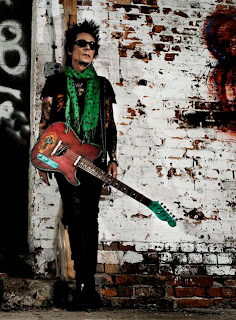
Earl Slick (born Frank Madeloni in Staten Island, New York,1 October 1952) is a guitarist best known for his collaborations with David Bowie, Jim Diamond and Robert Smith, although he has also worked with other artists (John Lennon: Double Fantasy, Milk and Honey, Yoko Ono), John Waite, and even released some solo recordings.
In the early 1970s, Earl Slick gained his reputation on New York music scene as a talented, skillful rock guitarist while playing in a band called Mack Truck featuring both singer/songwriter Jimmy Mack and his brothe r drummer Jack Mack. His work with Scottish singer/songwriter Jim Diamond was as the duo Slick Diamond. They did some tours and performances for a short time in the late 1970s.
r drummer Jack Mack. His work with Scottish singer/songwriter Jim Diamond was as the duo Slick Diamond. They did some tours and performances for a short time in the late 1970s.
Slick was initially hired by David Bowie to replace Mick
 Ronson as lead guitarist for the Diamond Dogs tour in 1974 (the live album David Live was culled from this tour). Slick also performed lead guitar on Bowie’s Young Americans and Station To Station albums, released in 1975 and 1976 respectively. It was Slick’s powerful playing that made the latter album’s “Stay” an enduring favourite of fans of Bowie and of guitar heroics alike. After running afoul of Bowie’s management, Slick was replaced as lead guitarist for the Station To Station tour (1976), his role being taken by Stacey Heydon. Slick then became a hired gun, working for Leo Sayer, Ian Hunter, John Lennon, and Yoko Ono. He also formed his own solo band.
Ronson as lead guitarist for the Diamond Dogs tour in 1974 (the live album David Live was culled from this tour). Slick also performed lead guitar on Bowie’s Young Americans and Station To Station albums, released in 1975 and 1976 respectively. It was Slick’s powerful playing that made the latter album’s “Stay” an enduring favourite of fans of Bowie and of guitar heroics alike. After running afoul of Bowie’s management, Slick was replaced as lead guitarist for the Station To Station tour (1976), his role being taken by Stacey Heydon. Slick then became a hired gun, working for Leo Sayer, Ian Hunter, John Lennon, and Yoko Ono. He also formed his own solo band.
Slick returned to Bowie for 1983’s Serious Moonlight tour, to support the Let’s Dance album. Ironically, Slick, who was ousted as lead guitarist from Bowie’s 1976 tour, was the last-minute lead-guitarist replacement for Bowie’s 1983 tour (substituting for Stevie Ray Vaughan).
Slick then formed Phantom, Rocke
View Next 25 Posts
 Rich but also one slightly older British contemporary of his, the Hollies’ Bobby Elliott. By the mid-’60s, Bunker had become a serious blues enthusiast — he and a friend, Mick Abrahams, became members of a blues band called McGregor’s Engine in 1967 when they crossed paths with Anderson and Cornick, who were members of another band that was in the process of breaking up. The four decided to join forces in what became known as Jethro Tull, playing a mix of rock, blues, and folk music.
Rich but also one slightly older British contemporary of his, the Hollies’ Bobby Elliott. By the mid-’60s, Bunker had become a serious blues enthusiast — he and a friend, Mick Abrahams, became members of a blues band called McGregor’s Engine in 1967 when they crossed paths with Anderson and Cornick, who were members of another band that was in the process of breaking up. The four decided to join forces in what became known as Jethro Tull, playing a mix of rock, blues, and folk music.
– the most committed to the blues of any of them — was out of the lineup by the end of 1968. Cornick left next, but Bunker was there for the entire three-album run-up to their commercial and critical triumph with Aqualung, including the group’s early tours of the United States. He wasn’t comfortable with the more complex progressive rock elements that were starting to manifest themselves in Anderson’s writing and the group’s sound, however, and had also decided to get married — his exit from the band followed soon after. He was succeeded by Barriemore Barlow, and over the next few years Bunker concentrated on the closer-to-home endeavors of running a dog kennel and pursuing his original field of engineering.






























